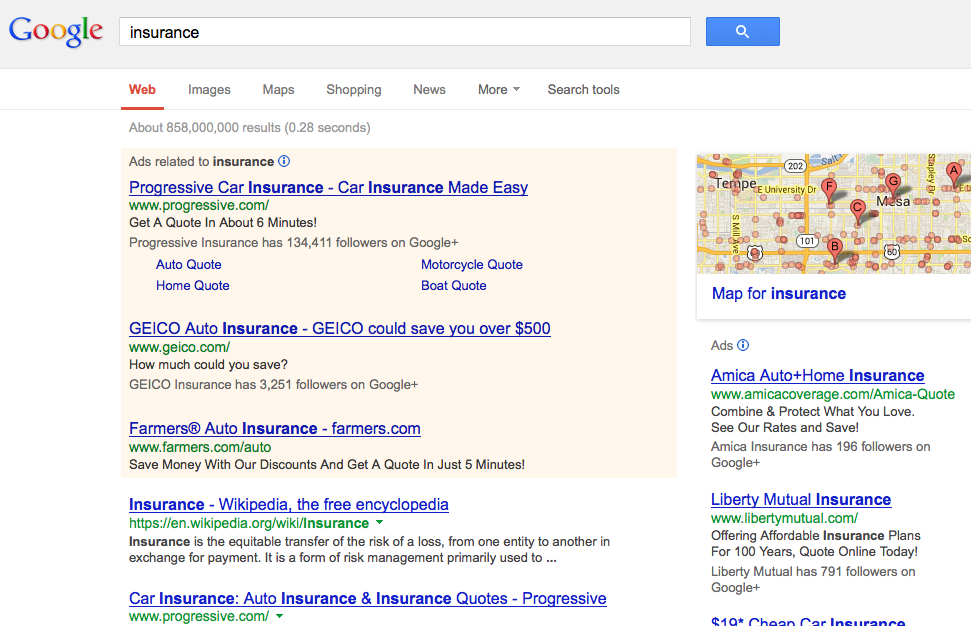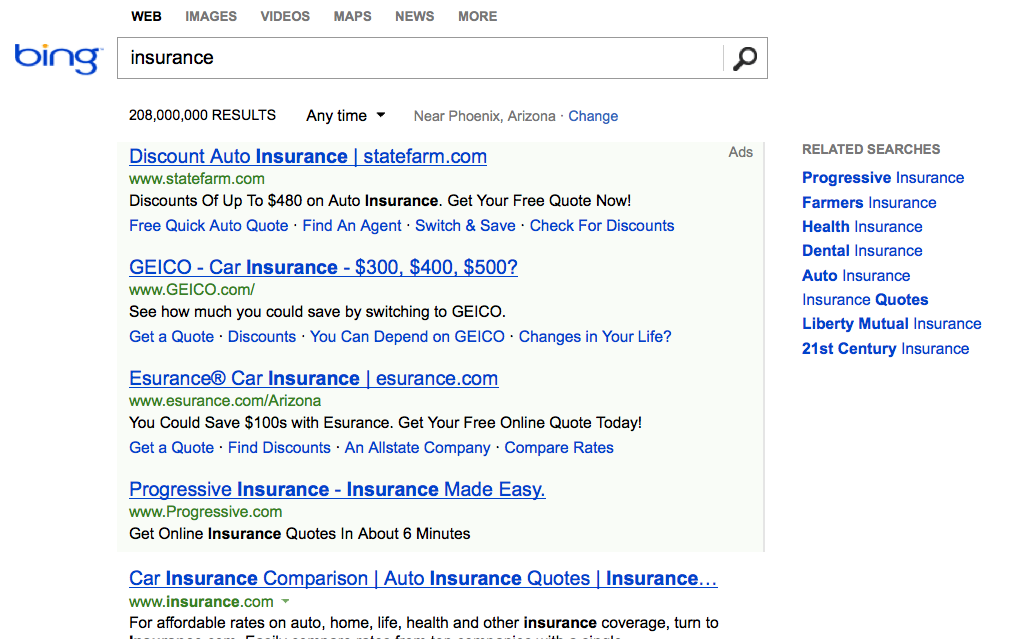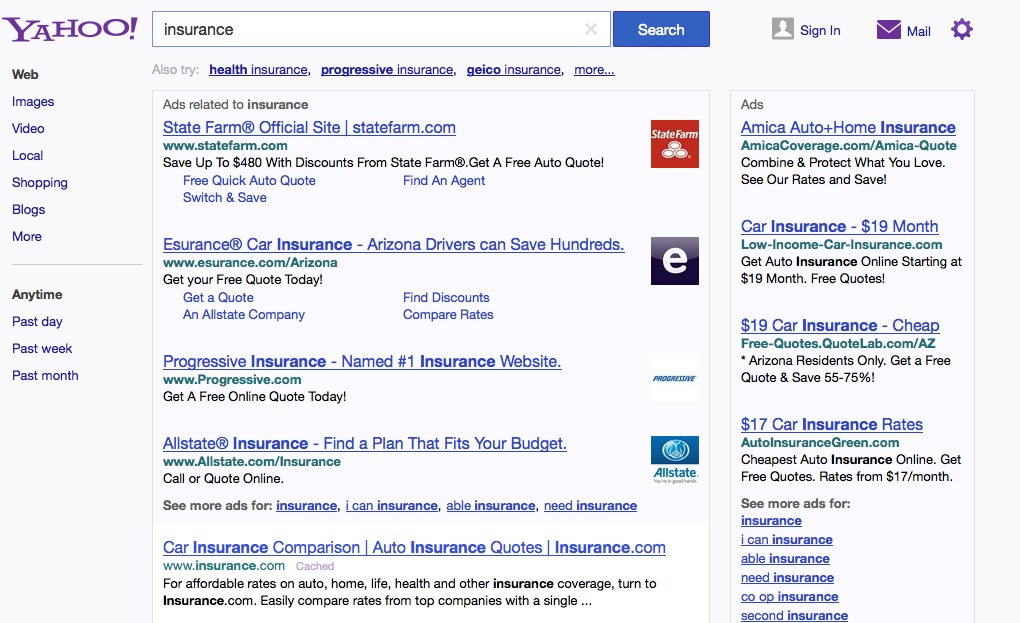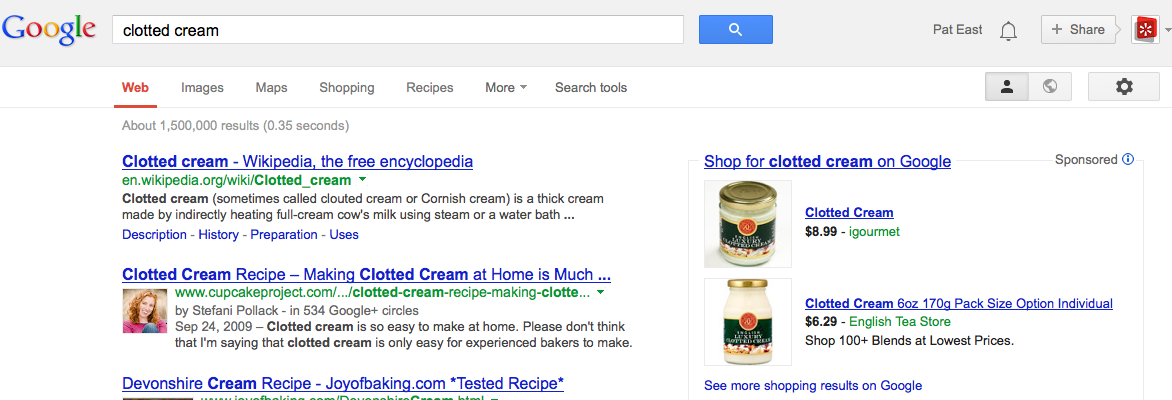Our PPC ecosystem is probably going to be changing soon. On June 25th, the Federal Trade Commission sent off a warning shot to a bunch of search engines, and it will most likely be reshaping the real estate on which our careers and lives (and senses of self and self worth {etc., etc.}) are built.
Here’s the main thrust the letter:
“To avoid the potential for deception, consumers should be able to easily distinguish a natural search result from advertising that a search engine delivers.”
This week’s letter revisits a lot of issues brought that was originally sent to search engines back in 2002 (a year in which Nickelback’s “How You Remind Me” topped Billboard’s year end charts), and the FTC feels that in the intervening years the search engines have gotten a bit lax in their adherence to that letter.
What has to feel particularly damning to the engines themselves is a study that the FTC cites that found “nearly half of searchers did not recognize top ads as distinct from natural search results and said the background shading used to distinguish the ads was white.”
In the immortal words of Scooby Doo, ruh-roh.
Here’s what they’re asking the engines to do differently:
Advertising disclosures need to be clear and prominent.
They’re giving the engines some leeway with this, and they state that “any method may be used, so long as it is noticeable and understandable to consumers.” That doesn’t prevent them from giving some tips, though.
Here is how the FTC thinks that Google, Yahoo! and Bing should do things differently.
Provide clearer visual cues surrounding their ads. The current shading is too light in their opinion, and here’s their specifications for a proper visual off set: “(1) more prominent shading that has a clear outline, (2) a prominent border that distinctly sets off advertising from the natural search results; or (3) both prominent shading and a border.”
Advertisements should have easily distinguishable text labels. Advertising shouldn’t be set off simply by shading and an outline. The FTC is looking for an engine to “(1) uses language that explicitly and unambiguously conveys if a search result is advertising; (2) is large and visible enough for consumers to notice it; and (3) is located near the search result (or group of search results) that it qualifies and where consumers will see it.”
The FTC is basically letting the engines know that their shading and text has gotten too nondescript, and they’ve noticed that consumers aren’t as likely to notice when an ad is an ad.
There’s also a footnote in the letter that has to be somewhat validating for those who’ve been preaching the gospel of mobile.
In designing web pages, search engines … should ensure that any visual cues used to distinguish advertising, such as background shading, are sufficiently visible on both mobile devices and desktop computers. Indeed, a search engine at a minimum can determine whether a web page will be displayed on a mobile device as opposed to desktop computer… Consequently, we believe that search engines should consider using web pages of different luminosities for mobile devices and desktop computers.
It looks like the year of mobile is finally here! If the FTC is recognizing the value of a mobile campaign, it’s a safe bet that mobile has made it to the main stage. It seems like mobile devices are a bigger offender in their eyes than desktop, so look for changes in that platform. It’ll be an interesting few months for mobile advertising, what with campaigns getting enhanced and the shading of the ads almost certainly set to change.
There’s also a nod to voice advertising, which will surely be on the rise now that people are getting used to asking Siri for things.
Further, if a voice interface is used to deliver search results, a search engine should make an audio disclosure that is of an adequate volume and cadence for ordinary listeners to hear and comprehend it.
Before closing the letter, the FTC offers a bit of shaming to the engines for their decreasingly relaxed emphasis on users knowing when an ad is an ad.
[S]earch engines have reduced the font size of some text labels to identify top ads and other advertising and often locate these labels in the top right-hand corner of the shaded area or ‘ad block,’ as is the case with top ads. Consumers may not as readily notice the labels when placed in the top right-hand corner, especially when the labels are presented in small print and relate to more than one result.
The FTC even gets a little into heat mapping and how users process a webpage, stating that “web pages are normally viewed from left-center to right, with substantially less focus paid to the right-hand side.” As a result of this behavior, they “recommend that search engines place any text label used to distinguish advertising results immediately in front of an advertising result, or in the upper-left hand corner of an ad block, including any grouping of paid specialized results, in adequately sized and colored font.”
At a certain point, the letter begins to feel like a nice Festivus celebration. They’re missing the aluminum pole and the feats of strength, but man are they airing some grievances. Not only is the shading not different enough, not only is there not an outline, not only are they taking advantage of mobile users, the search engines aren’t even using the right language.
[T]o avoid the potential for ambiguity and deception, search engines should consider using the same terminology to label any form of advertising delivered to consumers.
For example, if a search engine labels some advertisements as “ads,” it should consider using the same label for any other advertisements. Using different terms to label various types of advertisements risks confusing consumers.
The take home insight from the entire letter is this: “Regardless of the precise form search may take in the future, the long-standing principle of making advertising distinguishable from natural results will remain applicable.”
So the FTC threw a big, wet blanket onto the world of paid search today. How the engines react will definitely be something to keep an eye on, but you can probably bet that the individual SERPs aren’t going to look like they do currently for very much longer.



Here are some ways in which this letter could affect what we, the advertisers see in terms of advertising and ROI.
Declining CTRs. The FTC cites something in their letter that we already know it to be true. People just don’t like ads. The clearer the indication that something is an ad, the higher the likelihood that someone with a distaste for marketing professionals will avoid clicking. I think that PLAs are doing so well right now because it’s easy to overlook that they’re ads. They just look like regular listings at first pass.

Different ad real estate. Will Google shift where they place their ad blocks? Could bottom ads go away at some point? Bing’s practice of showing the same ad above and below organic results will surely be affected in some way. Now that ads are supposed to be clearly demarcated, what are the engines going to do to goose CTR as much as possible? Google seems to be always playing with display URLs and where to place them, but could more radical ad formats be in our future? What can they do to entice clicks on what makes them money while complying with the new guidelines?
Mobile ads. We’re already at a disadvantage with these devices, as only the top two placements show above the organic listings. What’s going to happen to historically higher CTRs in mobile if the layout changes drastically? That seems like the area where the FTC was the most concerned, so I anticipate that’s where there’s going to be the most upheaval. I mentioned it before, but it’s worth stressing again: mobile will most likely be affected in a big way.
If you want any further reading on this topic, check out this post. (My personal favorite part of that article is that an AdWords display ad is place in an extremely deceptive location. It matches the main font of the article and the AdWords disclaimer is near illegible. Basically the stuff that the FTC is all riled up about. Luckily for ibnlive.in.com there was no mention of deceptive display ad placement in this letter. So far it’s search and search alone.)
In talking about this around the office with British Sam, he’s taking a pretty level-headed approach to everything. He thinks Google and Bing and the people at the engines are all smart. They’re going to do what’s in their (along with our) best interests. Ads are their revenue stream, and they’re going to do what they can to maximize that. But things are going to look different.
What do you think, the Internet? How could this letter change things for the search engines? Or do you think the changes are small enough that things could go on as always with the ad boxes bit just a bit yellower?



